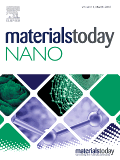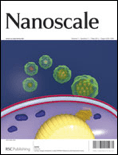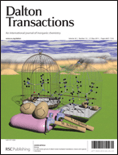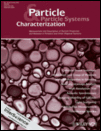
FULLERENES NANOTUBES AND CARBON NANOSTRUCTURES
Scope & Guideline
Innovating the Future with Carbon-Based Research
Introduction
Aims and Scopes
- Synthesis and Characterization of Carbon Nanomaterials:
Research articles often focus on the various methods of synthesizing carbon nanostructures, including chemical vapor deposition (CVD), hydrothermal processes, and green synthesis techniques. Characterization methods such as spectroscopy, microscopy, and thermal analysis are extensively discussed. - Applications in Energy Storage and Conversion:
The journal highlights advancements in the use of carbon nanomaterials for energy applications, including supercapacitors, batteries, and thermoelectric materials. This area showcases the potential of these materials to enhance energy efficiency and storage capabilities. - Environmental Applications and Remediation:
Research exploring the use of carbon nanomaterials in environmental remediation, including wastewater treatment and pollutant adsorption, is a significant focus. Studies often investigate the efficiency of these materials in removing contaminants from water and air. - Biomedical Applications:
The journal includes research on the biocompatibility and application of carbon nanostructures in drug delivery, biosensing, and imaging. The unique properties of carbon materials make them suitable for various biomedical applications. - Fundamental Studies on Carbon Structures:
Theoretical and experimental studies addressing the fundamental properties of carbon nanostructures, including their electronic, optical, and mechanical characteristics, are prevalent. This includes investigations into novel carbon allotropes and their potential applications.
Trending and Emerging
- Advanced Energy Storage Solutions:
There is a growing emphasis on the development of carbon nanomaterials for advanced energy storage solutions, such as lithium-sulfur and aluminum-ion batteries. Research is focusing on improving performance, cycle stability, and efficiency. - Carbon Nanomaterials in Electronics and Photonics:
Recent publications indicate an increasing interest in the application of carbon nanomaterials in electronic devices and photonic applications, including sensors, transistors, and optoelectronic devices. - Sustainable and Green Synthesis Methods:
The trend towards environmentally friendly and sustainable synthesis methods for carbon nanomaterials is gaining momentum. Researchers are exploring bio-based and green chemistry approaches to reduce environmental impact. - Multifunctional Composite Materials:
Research on multifunctional composites incorporating carbon nanostructures is on the rise. These composites are being designed for various applications, including structural, thermal, and electrical enhancements. - Biomedical Applications and Drug Delivery Systems:
There is an emerging focus on the use of carbon nanostructures in biomedical applications, particularly in drug delivery systems and imaging techniques, highlighting their potential in healthcare and diagnostics.
Declining or Waning
- Traditional Applications in Construction Materials:
Research on the use of carbon nanomaterials specifically in traditional construction materials such as cement and concrete has decreased. While still relevant, the emphasis appears to be shifting towards more innovative applications and advanced composites. - Basic Research on Fullerenes:
There seems to be a waning interest in fundamental studies solely focused on the chemistry and physics of fullerenes without practical applications. This may reflect a broader trend towards research that emphasizes application-driven studies. - Low-Impact Environmental Studies:
Studies that focus on low-impact or less innovative applications of carbon nanomaterials in environmental contexts, such as basic adsorption studies without new methodologies or materials, are becoming less frequent. - Niche Applications in Specific Industries:
Research targeting very niche applications of carbon nanomaterials in specific industrial contexts has seen a decline, possibly due to the need for broader relevance and impact in the field.
Similar Journals

Journal of Inorganic and Organometallic Polymers and Materials
Exploring Innovations in Materials Science and Polymer ChemistryThe Journal of Inorganic and Organometallic Polymers and Materials, published by SPRINGER, is a premier academic journal dedicated to advancing the field of materials science, particularly in the domains of inorganic and organometallic polymers. Established in 1996, this journal has successfully converged multiple years of research, reflecting the dynamic evolution of the field through to 2024. With an impressive Scopus Rank placing it in the top 81st percentile in both Materials Chemistry and Polymers and Plastics, it is recognized for its significant contributions and innovations. The journal is classified in the prestigious Q2 Category, indicating its influence and relevance among leading publications. While it operates under a subscription model, the journal is committed to disseminating cutting-edge research, providing insights that empower researchers, professionals, and students to push the boundaries of materials chemistry and polymer science. Its focus on high-quality, peer-reviewed articles ensures that readers are equipped with the latest findings and methodologies that drive this exciting and rapidly evolving field.

Journal of Nano Research
Transforming Ideas into Nano InnovationsThe Journal of Nano Research, published by Trans Tech Publications Ltd, is a distinguished academic journal dedicated to the rapidly evolving field of nanotechnology and materials science. With an ISSN of 1662-5250 and an E-ISSN of 1661-9897, the journal has been an important platform for researchers and professionals since its inception in 2008, continuing to provide high-quality peer-reviewed research through to 2024. Nestled in Switzerland, the Journal of Nano Research plays a pivotal role in disseminating cutting-edge findings, as recognized by its categorization in Q3 for Materials Science and Physics while being positioned in Q4 for Nanoscience and Nanotechnology as of 2023. With Scopus rankings highlighting its impact, including Rank #129 in general Physics and Astronomy and Rank #300 in Materials Science, this journal is crucial for academics seeking to stay ahead in research trends and innovations in nano-related disciplines. Although it operates under a subscription model, the journal's objectives include fostering collaboration and knowledge-sharing among researchers, making it an invaluable resource for anyone immersed in the world of nanotechnology.

Materials Today Nano
Connecting Researchers to the Latest in Nano-Materials AdvancementsMaterials Today Nano, published by Elsevier, is a premier academic journal dedicated to the forefront of nano-materials research, encompassing innovations and advancements in biomaterials, condensed matter physics, electronic, optical, and magnetic materials, as well as materials chemistry. With an impressive Q1 ranking across multiple categories, including biomaterials and materials chemistry, this journal serves as a essential platform for researchers, professionals, and students aiming to contribute to and stay informed on cutting-edge developments that push the boundaries of materials science. Its open access model allows for wider dissemination of high-impact findings, ensuring that the research reaches a global audience. Operating from the United Kingdom, Materials Today Nano plays a vital role in fostering interdisciplinary collaboration and advancing scientific understanding in this rapidly evolving field.

Nanoscale
Elevating Research Standards in Nanotechnology.Nanoscale is a premier academic journal published by the Royal Society of Chemistry, dedicated to advancing the field of nanoscience and nanotechnology. With both its ISSN (2040-3364) and E-ISSN (2040-3372) ensuring wide accessibility, the journal is renowned for its high-impact research contributions, reflected in its impressive 2023 Impact Factor and prestigious Q1 ranking in both Materials Science (Miscellaneous) and Nanoscience and Nanotechnology categories. Since its inception in 2009, Nanoscale has fostered a collaborative platform where leading researchers from around the globe share their innovative findings across a multitude of topics spanning from material synthesis to applications in nanotechnology. The journal not only serves as a valuable resource for professionals, researchers, and students but also actively engages the academic community in discussing emerging trends, thus shaping the future of nanoscience. Situated in the heart of the UK at Thomas Graham House, Science Park, Milton Rd, Cambridge CB4 0WF, Nanoscale remains a key publication for those looking to keep abreast of the latest breakthroughs in an ever-evolving field.

Advances in Nano Research
Elevating Knowledge in Atomic and Molecular PhysicsAdvances in Nano Research, published by TECHNO-PRESS, is a prominent academic journal dedicated to advancing knowledge across various facets of nanoscience and nanotechnology. With its ISSN of 2287-237X and E-ISSN 2287-2388, this journal serves as a vital resource for researchers and professionals, focusing on areas such as Atomic and Molecular Physics, Biotechnology, Catalysis, Ceramics and Composites, and Electrical Engineering. Since its inception in 2017, the journal has notably achieved Q2 ranking in multiple categories for the year 2023, reflecting its commitment to high-quality research dissemination and its increasing influence in Scopus rankings, including ranks within the top 12% in Chemical Engineering. While Open Access options are currently unavailable, the rigorous peer-review process ensures that only the most impactful studies are published, further solidifying its importance within the academic community. As a significant player in the fields of engineering and materials science, Advances in Nano Research aims to foster innovation and collaboration, making it an essential publication for those engaged in cutting-edge research and development within the realm of nanotechnology.

Journal of Nanoanalysis
Pioneering Discoveries in Nanoscale MethodologiesThe Journal of Nanoanalysis is a leading publication in the field of nanotechnology, dedicated to advancing the understanding and application of nanoscale analysis methodologies. Published by BORNA SANJESH KIMIA CO-BSK CO, this journal aims to provide a comprehensive platform for researchers, professionals, and students to disseminate cutting-edge findings and innovative approaches in nanomaterials characterization, nanoelectronics, and related areas. With a focus on high-quality peer-reviewed articles, the journal supports the global scientific community in fostering interdisciplinary collaboration and knowledge sharing. Although currently lacking an explicit impact factor, the Journal of Nanoanalysis is poised to make significant contributions to the field, with its commitment to open access and accessibility globally enriching the pool of research available for academic and practical advancements.

DALTON TRANSACTIONS
Exploring the Depths of Inorganic ChemistryDALTON TRANSACTIONS, published by the esteemed Royal Society of Chemistry, is a premier journal in the field of Inorganic Chemistry, recognized for its significant contributions to advancing research and scholarship since its inception in 2002. With an impressive Impact Factor and ranked in the Q1 category, it holds a notable position at Rank #21 out of 79 within its Scopus category, highlighting its reputation for excellence and influence in the scientific community. This journal provides a platform for disseminating high-quality research, reviews, and communications related to all aspects of inorganic chemistry, fostering collaboration and innovation among researchers, professionals, and students alike. Although it does not offer open access, its robust selection process and commitment to scholarly integrity ensure that published works are of the highest standard. For those passionate about inorganic chemistry, DALTON TRANSACTIONS serves as an essential resource, fostering a deeper understanding of the field and its applications.

PARTICLE & PARTICLE SYSTEMS CHARACTERIZATION
Elevating Standards in Particle CharacterizationPARTICLE & PARTICLE SYSTEMS CHARACTERIZATION is a distinguished journal dedicated to advancing the knowledge within the fields of Chemistry, Condensed Matter Physics, and Materials Science. Published by WILEY-V C H VERLAG GMBH in Germany, this journal has established a solid reputation since its inception in 1984, showcasing research aimed at understanding the intricate properties and behaviors of particulate systems. With an impressive Q2 ranking in its respective categories and Scopus ranks indicating a robust standing in the global research community, it serves as an essential resource for researchers, professionals, and students. Although it does not currently offer Open Access options, its comprehensive articles and reviews provide valuable insights that contribute significantly to the ongoing discourse in these scientific domains. As it prepares to celebrate four decades of publication, PARTICLE & PARTICLE SYSTEMS CHARACTERIZATION continues to provide a vital platform for emerging knowledge, fostering innovation and collaboration among scientists dedicated to the study of particle systems.

FlatChem
Advancing the Frontiers of Materials ScienceFlatChem, an esteemed journal published by ELSEVIER, serves as a premier platform for disseminating high-quality research in the dynamic fields of ceramic and composite materials, electronic and optical materials, materials chemistry, and surfaces, coatings, and films. Since its inception in 2017, the journal has garnered a robust reputation, evidenced by its rank in the top quartile (Q1) across multiple categories, including a commendable rank of #25/127 in Ceramics and Composites and #49/284 in Electronic, Optical and Magnetic Materials. With a focus on pioneering advancements and innovative methodologies, FlatChem not only highlights cutting-edge research but also promotes collaboration and knowledge exchange within the scientific community. The journal’s impact is underscored by its impressive rankings in Scopus, marking it as a vital resource for researchers, professionals, and students aiming to stay at the forefront of materials science. As an open-access journal, it ensures that groundbreaking findings are readily accessible, fostering a broader understanding and application of materials innovation worldwide. The journal is based in the Netherlands, with its headquarters located at RADARWEG 29, 1043 NX AMSTERDAM, NETHERLANDS. Join the vibrant community contributing to FlatChem and engage with the forefront of material advancements.

Journal of Nanostructures
Connecting Ideas and Innovations in NanotechnologyJournal of Nanostructures, published by UNIV KASHAN PRESS, is an esteemed open-access journal that has been actively disseminating groundbreaking research since 2011. With an ISSN of 2251-7871 and an E-ISSN of 2251-788X, this journal has established itself as a significant platform for the exploration of nanostructured materials across various disciplines, including biomaterials, electronic, optical, and magnetic materials. As a testament to its scholarly impact, the journal has achieved notable rankings in its respective categories, including Q3 status in prominent areas such as Mechanics of Materials and Polymers and Plastics. This makes the Journal of Nanostructures a vital resource for researchers and professionals seeking to advance their understanding and innovation in nanotechnology. Furthermore, the journal's commitment to open accessibility ensures that valuable knowledge reaches a diverse audience, facilitating collaboration and growth in this dynamic field. For researchers eager to contribute, the journal offers a platform to publish impactful findings that can influence both academia and industry.